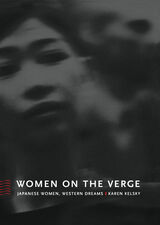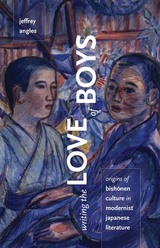6 start with W start with W

As industrial and scientific developments in early-twentieth-century Japan transformed the meaning of “objective observation,” modern writers and poets struggled to capture what they had come to see as an evolving network of invisible relations joining people to the larger material universe. For these artists, literary modernism was a crisis of perception before it was a crisis of representation. When Our Eyes No Longer See portrays an extraordinary moment in the history of this perceptual crisis and in Japanese literature during the 1920s and 1930s.
The displacement in science of “positivist” notions of observation by a “realist” model of knowledge provided endless inspiration for Japanese writers. Gregory Golley turns a critical eye to the ideological and ecological incarnations of scientific realism in several modernist works: the photographic obsessions of Tanizaki Jun’ichiro’s Naomi, the disjunctive portraits of the imperial economy in Yokomitsu Riichi’s Shanghai, the tender depictions of astrophysical phenomena and human-wildlife relations in the children’s stories of Miyazawa Kenji.
Attending closely to the political and ethical consequences of this realist turn, this study focuses on the common struggle of science and art to reclaim the invisible as an object of representation and belief.

In exploring the promises, limitations, and contradictions of these “occidental longings,” Women on the Verge exposes the racial and erotic politics of transnational mobility. Kelsky shows how female cosmopolitanism recontextualizes the well-known Western male romance with the Orient: Japanese women are now the agents, narrating their own desires for the “modern” West in ways that seem to defy Japanese nationalism as well as long-standing relations of power not only between men and women but between Japan and the West. While transnational movement is not available to all Japanese women, Kelsky shows that the desire for the foreign permeates many Japanese women’s lives. She also reveals how this feminine allegiance to the West—and particularly to white men—can impose its own unanticipated hegemonies of race, sexuality, and capital.
Combining ethnography and literary analysis, and bridging anthropology and cultural studies, Women on the Verge will also appeal to students and scholars of Japan studies, feminism, and global culture.

In this study of the Japanese jeweled pagoda mandalas, Halle O’Neal reveals the entangled realms of sacred body, beauty, and salvation. Much of the previous scholarship on these paintings concentrates on formal analysis and iconographic study of their narrative vignettes. This has marginalized the intriguing interplay of text and image at their heart, precluding a holistic understanding of the mandalas and diluting their full import in Buddhist visual culture. Word Embodied offers an alternative methodology, developing interdisciplinary insights into the social, religious, and artistic implications of this provocative entwining of word and image.
O’Neal unpacks the paintings’ revolutionary use of text as picture to show how this visual conflation mirrors important conceptual indivisibilities in medieval Japan. The textual pagoda projects the complex constellation of relics, reliquaries, scripture, and body in religious doctrine, practice, and art. Word Embodied also expands our thinking about the demands of viewing, recasting the audience as active producers of meaning and offering a novel perspective on disciplinary discussions of word and image that often presuppose an ontological divide between them. This examination of the jeweled pagoda mandalas, therefore, recovers crucial dynamics underlying Japanese Buddhist art, including invisibility, performative viewing, and the spectacular visualizations of embodiment.

In texts from the mid-Heian to the early Kamakura periods, certain figures appear to be “marginal” or removed from “centers” of power. But why do we see these figures in this way?
This study first seeks to answer this question by examining the details of the marginalizing discourse found in these texts. Who is portraying whom as marginal? For what reason? Is the discourse consistent? The author next considers these texts in terms of the predilection of modern scholarship, both Japanese and Western, to label certain figures “marginal.” She then poses the question: Is this predilection a helpful tool or does it inscribe modern biases and misconceptions onto these texts?


Jeffrey Angles focuses on key writers, examining how they experimented with new language, genres, and ideas to find fresh ways to represent love and desire between men. He traces the personal and literary relationships between contemporaries such as the poet Murayama Kaita, the mystery writers Edogawa Ranpo and Hamao Shiro, the anthropologist Iwata Jun’ichi, and the avant-garde innovator Inagaki Taruho.
Writing the Love of Boys shows how these authors interjected the subject of male–male desire into discussions of modern art, aesthetics, and perversity. It also explores the impact of their efforts on contemporary Japanese culture, including the development of the tropes of male homoeroticism that recur so often in Japanese girls’ manga about bishonen love.
READERS
Browse our collection.
PUBLISHERS
See BiblioVault's publisher services.
STUDENT SERVICES
Files for college accessibility offices.
UChicago Accessibility Resources
home | accessibility | search | about | contact us
BiblioVault ® 2001 - 2024
The University of Chicago Press









